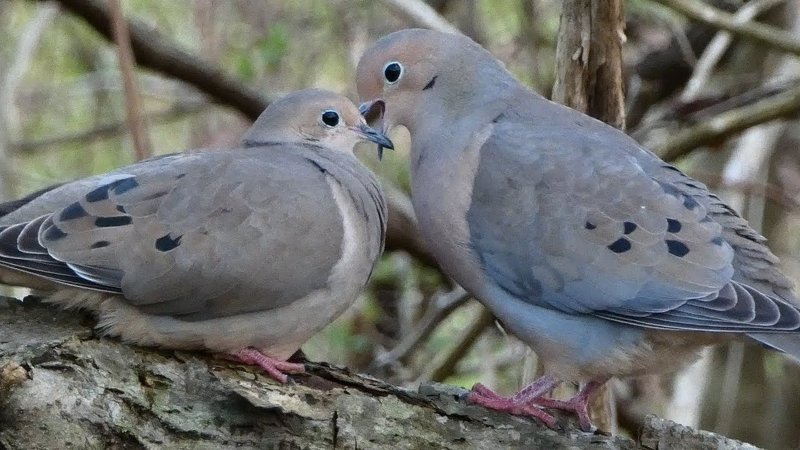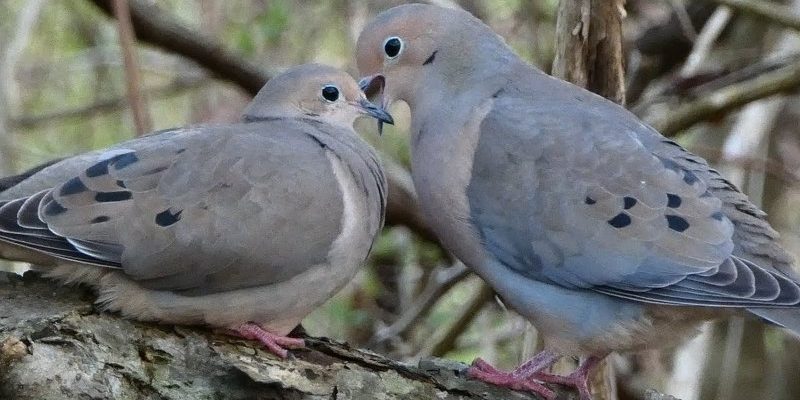
Let’s dive into the fascinating world of doves and uncover the intricate courtship and mating rituals that not only define their relationships but also showcase their unique behaviors. Think of it like watching a beautiful ballet unfold in nature, where every movement and call has a purpose. From their charming displays to their nurturing instincts, doves have much to teach us about affection and companionship.
Understanding Dove Courtship
Courtship in doves is more than just a simple meeting of two birds. It’s a careful dance filled with sounds, movements, and gestures. Here’s the thing: doves are not just looking for a partner; they’re also establishing a bond that will last a lifetime, as many dove species are monogamous. This means they often mate for life, which adds another layer of significance to their courtship rituals.
Dove courtship typically begins when a male spots a potential mate. He’ll start by puffing up his chest, which is his way of showing off his size and health. He may also flap his wings and perform a series of bowing motions. The idea here is to impress the female and draw her in. You might think of it as a dance-off where the goal is to win the heart of the audience.
Once the female shows interest, the male follows up with more elaborate displays. These can include intricate flying patterns, where he swoops and glides in the air. This not only showcases his physical abilities but also signals to the female that he is strong and capable. If she’s impressed, the pair may start to communicate through soft coos and gentle nuzzles, reinforcing their budding relationship.
The Role of Vocalizations
Vocalizations in dove courtship are crucial. Male doves are known for their sweet, soft cooing sounds that echo through the air. You might be wondering, why is this sound so important? Well, it serves multiple purposes. First, it attracts females, signaling that a male is present and ready for mating. Secondly, it helps reinforce the bond between the male and female during their interactions.
During the courting phase, the male’s coos can become rhythmic and repetitive. This isn’t just noise; it’s a form of communication that creates intimacy. The female might respond with her own softer coos, creating a delightful back-and-forth that helps solidify their connection. This is a crucial moment in their courtship, as it signifies mutual interest and reinforces their partnership.
Furthermore, these vocalizations can vary by species, making them a unique identifier. For instance, the mourning dove’s call is often described as mournful and soothing, while other types, like the ring-necked dove, have a more distinct series of coos. It’s like a musical signature—each species has its own tune.
Physical Displays and Gestures
In addition to vocalizations, physical displays play a major role in dove courtship. A male will often puff up his feathers, making himself look larger and more impressive. Imagine a peacock showing off its plumage, but in this case, it’s all about the feathers and body language of a dove.
These gestures can include head bobbing, circling, and even a kind of slow-motion strut. The male may carefully approach the female, tilting his head and maintaining eye contact. This behavior is a clear signal of confidence and interest. It’s not just about what they say; it’s about how they present themselves.
When the female responds positively, you can often see them engaging in mutual preening. This affectionate act of grooming is not only practical for keeping feathers clean, but it’s also a way to strengthen their bond. It’s a bit like couples sharing moments of tenderness in a relationship, and it plays a vital role in their mating rituals.
Nesting and Pair Bonding
Once courtship is successful, the next step is nesting. Doves are known for their strong pair bonds, and making a nest together solidifies that commitment. Typically, both the male and female participate in building the nest. They’ll look for twigs, leaves, and other materials to create a safe space for their future offspring. Think of it as a cozy home-building project.
The actual nesting process is a beautiful display of teamwork. The male will often gather materials, while the female arranges them in the nest. This collaboration not only prepares them for breeding but also further strengthens their bond. The journey of courtship transitions into a partnership that involves mutual effort and care.
Once the nest is ready, the female will lay her eggs—usually two at a time. Both parents will take turns incubating the eggs, which is a shared responsibility that highlights their commitment to each other and their future family. This shared parenting is a distinctive trait among many dove species, showcasing their nurturing instincts.
Mating Behavior
Mating in doves typically happens after the courtship and nesting phases have established a strong bond. You might think of it as a natural progression in their relationship. When the time comes, the male will approach the female, often performing more elaborate displays to ensure she’s ready.
Unlike some species that have complex mating rituals, dove mating is relatively straightforward. The male will mate with the female quickly, often just a brief encounter. It might seem straightforward, but this moment is deeply significant, as it represents the culmination of their courtship efforts.
After mating, the pair will remain close together, often snuggling or preening. It’s a gentle reminder of their bond, emphasizing that their connection extends beyond just the act of mating. This affectionate behavior is a hallmark of dove relationships, further showcasing their commitment to one another.
The Importance of Courtship Rituals
So, why should we care about the courtship and mating rituals of doves? Well, these behaviors are crucial not just for the survival of the species, but also for understanding the complexities of animal relationships. The rituals of doves offer a window into the importance of communication, trust, and cooperation in any partnership, human or animal alike.
Moreover, observing these rituals can provide insights into the health of the environment. A thriving dove population is often a sign of a balanced ecosystem. Their courtship patterns can also help researchers monitor environmental changes, offering a glimpse into the broader implications for wildlife and habitat conservation.
Ultimately, the courtship and mating rituals of doves remind us of the beauty of bonding and nurturing relationships. For a species known to symbolize peace and love, their behaviors exemplify what it means to care for one another in a world that’s often hectic and chaotic.
In conclusion, dove courtship and mating rituals are more than just fascinating behaviors—they reflect deep emotional connections and an understanding of partnership. Watching these gentle birds can teach us about the beauty of love and commitment, reminding us that even in the animal kingdom, affection and care go hand in hand. Next time you hear their soothing coos, take a moment to appreciate the intricate dance of courtship happening right in front of you!

